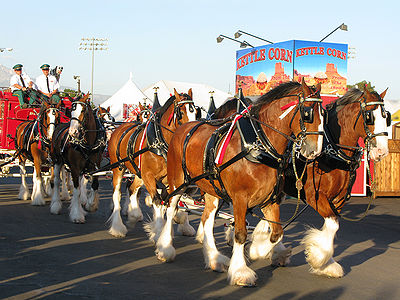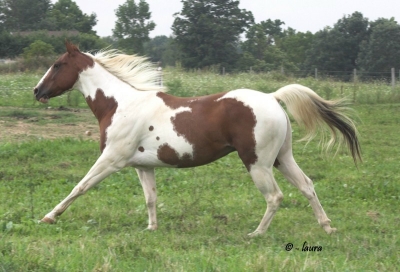
Clydesdales are a recognizable draft horse made popular by Anheiser-Busch’s Budweiser beer. Thought to have originated in Clyde Valley (or Clydesdale) Lansekshire in Scotland, they were named for the valley.
Until the advent of the automobile, draft horses were used to pull carriages and carts. They came into use as ceremonial horses because their large size was not suited to working on farms pulling plows.
Owners of Clydesdales can tell you because of their size, some may eat a lot more than other horses. And they need larger stalls. The Budweiser Clydesdales must have matching appearances. They are geldings with good temperaments, at least 4 years old, 72 inches tall at the withers, weigh 1800-2300 lbs. Each horse must have a reddish brown (bay) coat, a white blaze on the face, 4 white feet and a black mane and tail.
The Budweiser Clydesdales travel all over the United States each year. Some teams even go abroad to perform. These celebrities appear at parades, sporting events, wherever their schedule takes them. Three teams of 10 horses each make the trips although only 8 of them pull the beer wagon. The extra 2 horses are available as alternates.
The horses are always well taken care of, their good health of the utmost importance. Travel is limited to 500 miles a day with stops every 2-3 hours to check on the horses. They travel no more than 2 days in a row and a rest day before they are on the road again. There are veterinarians available at each event to check on the horses. If needed on the road, a local vet is contacted.
The horses’ diet is mainly hay, timothy hay being the best. It’s supplemented with concentrates and fat supplements. Some of the horses receive joint supplements as well.
A problem that often has to be dealt with is called “scratches.” It’s a chronic dermatitis found usually on the pastern and fetlock. It’s caused by moisture and dirt. Clydesdales with their long white hair on the legs can be prone to scratches. There are special ointments used to treat the problem. The Clydesdale farrier attends to the horses every six weeks, wherever they are.
Each Clydesdale team or “hitch” as they are called is accompanied by several experienced handlers with one handler keeping watch on them at night.
Anyone lucky enough to see these magnificent horses in person can attest to what a thrill it is to see them in action.

